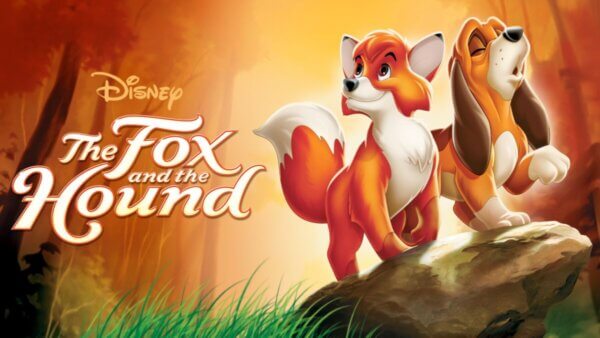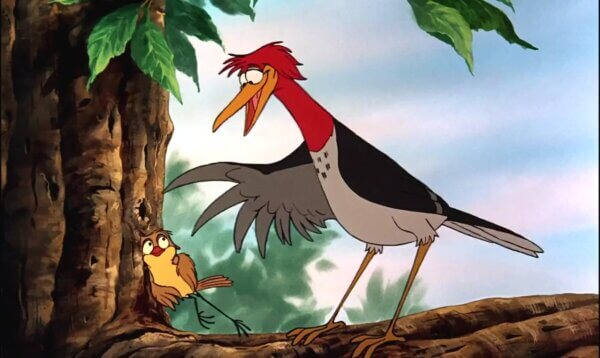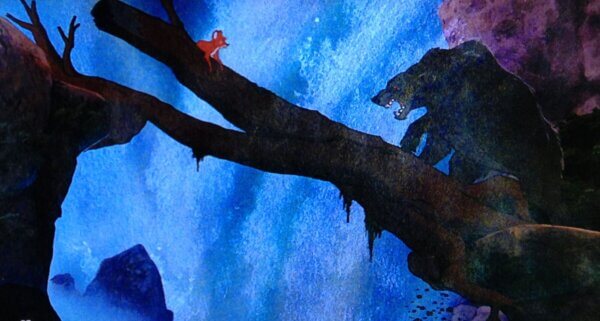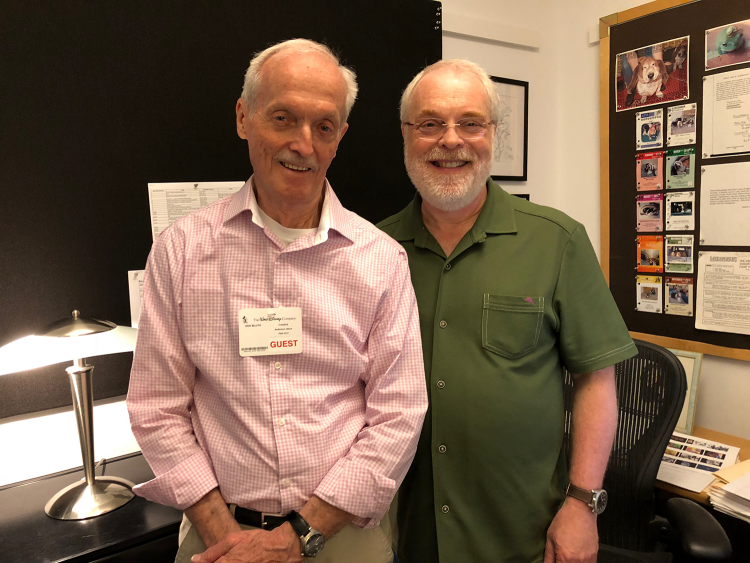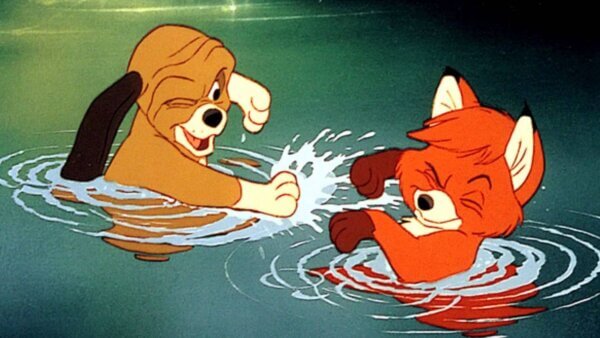“In My Heart is a Memory and There You’ll Always Be”: 40 Years of Disney’s The Fox and the Hound
On the 10th of July in 1981, Walt Disney studios released their twenty fourth animated film, The Fox and the Hound, based on the book of the same name by Daniel P. Mannix. Forty years later, it remains one of the studio’s most beloved titles from the eighties with its story of friendship from unlikely places as Tod the fox and Copper the hound dog become childhood friends. But as they grow up, their relationship gets challenged and tested as they are forced into their roles of hunter and hunted.
The film saw a dramatic change behind Disney’s doors as this was the first production of upcoming animators who paved the way for the industry and their own careers as filmmakers. But it would also the last project for the surviving Nine Old Men, nine key animators who worked with Walt Disney himself since his first feature length animated film Snow White and the Seven Dwarfs.
The Fox and the Hound should be celebrated for uniting the talents of creative individuals from different generations; and what the eldest animators would teach the new talented staff, that would eventually lead to The Disney Renaissance. However, the production went through some unanticipated hiccups with some of their most talented names who exited the project. So with that said, let’s explore some of these animators and their impact on the film’s production and how their lives would be changed forever from this classic film they helped to create.
The Last of the Nine Old Men
For those who may not know, the Nine Old Men were the key animators that worked with Walt Disney himself since his studio’s earliest feature films like Snow White and the Seven Dwarfs, Pinocchio and Bambi. They were also responsible for animating some of Mickey Mouse’s short films throughout the thirties. These nine individuals were Frank Thomas (1912 to 2004), Wolfgang Reitherman (1909 to 1985), Ollie Johnston (1912 to 2008), Marc Davis (1913 to 2000), John Lounsbery (1911 to 1976), Les Clark (1907 to 1979), Milt Kahl (1909 to 1987), Ward Kimball (1914 to 2002) and Eric Larson (1905 to 1988).
Out of these nine gentlemen, only Frank Thomas, Ollie Johnston and Wolfgang Reitherman remained at the studio to oversee the productions after the rest either retired or passed away; but even this would not last long for the three men. Both Frank Thomas and Ollie Johnston were going to retire halfway through the production and were determined to leave their mark by working on the relationships between the characters as well as focussing their efforts on the narrative; plus the new generation of animators who joined the team. But after their retirement, Wolfgang Reitherman stayed on to finish the film as one of its producers, as he was inspired by the original novel to develop the story into a feature film and saw it through to the end.
The Loss of One of Disney’s Finest Character Animator
Cliff Nordberg was an animator at Disney who was iconic for his work on animating characters on a number of short and feature length films when his career started in the 1940s. In particular, he was an animator who bought Goofy to life with the character’s signature slapstick humour in some of his leading short films from Hockey Homicide (1945) to Goofy’s Freeway Troubles (1965). But his craft has also appeared through what would become popular characters in some of Disney’s most iconic films like Tinkerbell and Captain Hook from Peter Pan (1953), the lovable stray dog Tramp from Lady and the Tramp (1955), Diablo the crow from Sleeping Beauty (1959) and Evinrude the dragonfly from The Rescuers (1977).
When The Fox and the Hound started production, Nordberg became a supervising animator with his expertise in animating these iconic characters and was an ideal fit as he would be responsible for animating Dinky and Boomer, the feathered comedy duo who are always outwitted by Squeaks the caterpillar. With his creative flair, he was able to get the most out of Disney veteran voice actors Richard Bakalyan and Paul Winchell and was able to show off his ability to emote comedy to the best of his abilities. But sadly, he passed away in the middle of production in 1979 at the age of sixty two. While The Fox and the Hound would be his last piece of work, he has left a legacy within the many characters and titles that he animated and are enjoyed decades later for a new generation of audiences to be entertained and loved by.
A New Generation of Animators
With a new production and positions available for new talent to join the team and learn from the remaining Nine Old Men after The Rescuers was released, this year also marks forty years since these creative individuals started their careers and paved a path forward in the animation and film industries.
Glen Keane and Randy Cartwright started their careers at Disney on this film and eventually became the supervising animators on the film. Keane was responsible for storyboarding and animating the scene where Tod saves Copper from the attack of a savage and menacing bear while Cartwright animated the adult Copper and his mentor Chief. They were both able to show their abilities and imagination to help create dramatic scenes and emotionally expressive characters. Their artistic ability would cement their careers as they would be one of the many people responsible The Disney Renaissance, a decade long era where Disney produced critically and commercially successful animated musical films. Keane and Cartwright both worked on the star-crossed protagonists in Beauty and the Beast (1991), which would become the first animated film to be nominated for Best Picture at the Academy Awards.
Among Glen Keane and Randy Cartwright, some of the animators who worked on The Fox and the Hound played key roles in establishing the new age of Disney classics, but they would continue to be a big part of Walt Disney Animation Studios forty years later. Ron Clements and John Musker would become the directors of The Little Mermaid (1989) and Aladdin (1992), but they would continue to work together and direct animated films for the famed studio including Treasure Planet (2002), The Princess and the Frog (2009) and Moana (2016), their first time directing a fully computer animated film.
But among the fresh bunch of talented animators, some wanted to stretch their talents as directors. Among these were Tim Burton and Brad Bird, who both also worked as animators at Disney on The Black Cauldron before they left to pursue their directing careers. While Burton would direct films for Warner Brothers like Pee-wee’s Big Adventure (1985) Beetlejuice (1988) as well as gothic stop motion animated films like Corpse Bride (2005), Brad Bird would not make his feature length directorial debut until 1999 with The Iron Giant before he went on to direct Pixar’s The Incredibles (2004) and Ratatouille (2007).
Don Bluth’s Departure
Before Don Bluth directed some of his most recognisable and respected work in the eighties and nineties with films including An American Tail (1986), The Land Before Time (1988), Thumbelina (1994) and Anastasia (1997), Bluth worked as an animator at Walt Disney Studios from 1955 off and on between his work at Filmation and other side projects. In particular, he animated on some of their feature films like Robin Hood (1973) and The Rescuers as well as being responsible for directing the animation on Pete’s Dragon (1977).
But by the end of the seventies, Bluth started to dislike the direction that the company was heading in and it wasn’t until he worked on The Fox and the Hound that he made a difficult decision, one that would impact the production as well as his own career. He decided to leave Disney while he was working on the film, but this action influenced thirteen other animators to resign too for similar reasons. With Disney having lost many animators in a short space of time, the film was pushed back and delayed for a year.
Despite the challenges of losing the talented Cliff Nordberg and the resignations after Don Bluth’s departure, the film proved to be successful at the box office, earning thirty nine million dollars worldwide, over three times its budget. It was also the film that was able to secure the trust of the new talented individuals who would go on to create some of the biggest successes for the studio and change the industry forever.
It’s because of the story of two unlikely friends and how it appealed to the animators from multiple generations that not just created a classic, but was their artistic merits that the old men and the future filmmakers could share in this film that no others can say hold dear to them.


